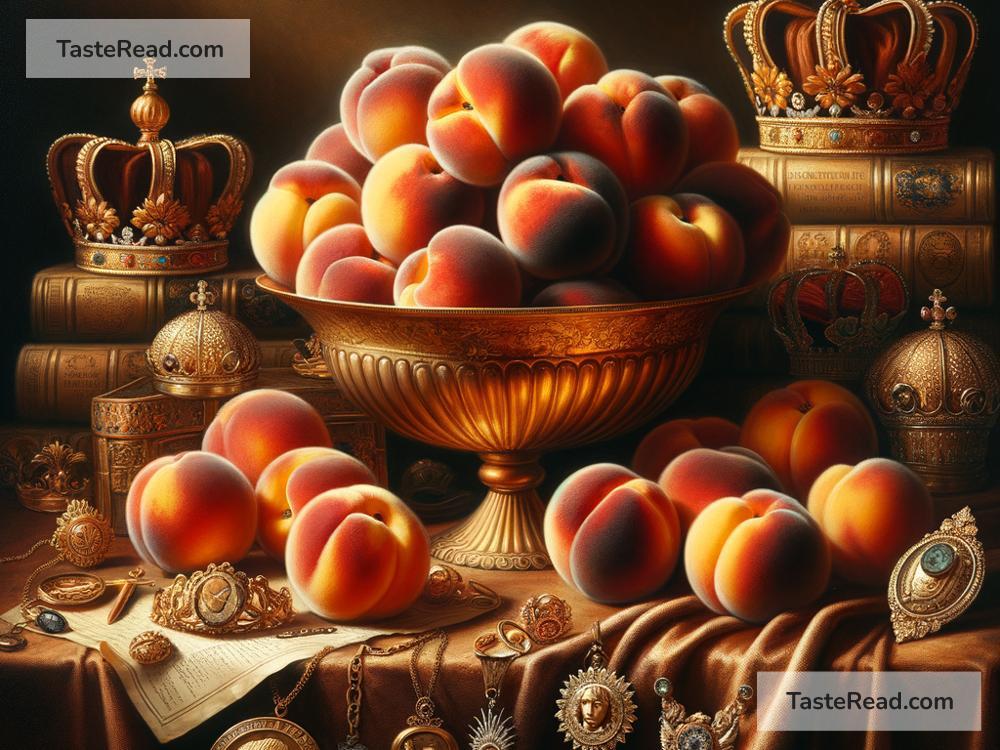The Curious History of Peaches and Royalty
Peaches are not just tasty fruits—they are also wrapped in centuries of fascinating stories involving kings, queens, and empires. From ancient China to the palaces of Europe, peaches have been closely linked to luxury, power, and royalty. This blog takes you on a sweet journey through the history of peaches and their connection to the world’s most powerful rulers.
The Peach’s Origins: A Royal Beginning in China
The story of peaches begins in ancient China, where the fruit has been cultivated for thousands of years. Historians believe peaches were first grown around 2,000 BCE. Early peaches were smaller and less sweet than the ones we enjoy today, but they quickly gained cultural and symbolic importance.
In Chinese culture, peaches became a sign of immortality and long life, thanks to their appearance in myths and legends. For example, one famous story involves the “Peaches of Immortality,” which were said to grow in the garden of Xi Wangmu—the Queen Mother of the West. According to the tale, these magical peaches ripened only once every 3,000 years and had the power to grant eternal life.
Because of their importance in art, literature, and religion, peaches were often reserved for royals and aristocrats in early China. People believed that eating peaches could improve health and lead to greater longevity. Ancient emperors viewed the fruit not only as delicious but also as a symbol of their divine right to rule. Peaches were even given as gifts to the emperor during important ceremonies.
Ancient Trade: Spreading Peaches Across the World
During China’s Han dynasty (206 BCE–220 CE), peaches began to travel beyond their homeland, thanks to international trade routes like the Silk Road. Traders carried peach seeds to Persia (modern-day Iran) and later to Europe. In Persia, peaches became popular with rulers and nobles because of their exotic taste and beautiful appearance. They named the fruit persicum, meaning “of Persia,” which is why the scientific name of the peach is Prunus persica.
When peaches arrived in Europe, wealthy families and royalty were quick to embrace them. During the time of ancient Rome, peaches were considered luxury items. Only the richest Roman citizens could afford them, and they were often imported at high prices. Roman emperors reportedly enjoyed peaches as part of their feasts, treating them as special delicacies.
The European Renaissance: Peaches Become Royal Favorites
Peaches became even more fashionable during the Renaissance, a period of cultural revival in Europe (14th–17th centuries). Royalty across Europe viewed peaches as a symbol of wealth and sophistication. Kings and queens were particularly fond of the fruit, and it started to appear in royal gardens.
One famous example is King Charles V of France, who reportedly kept over 40 varieties of peach trees in his royal orchards during the 14th century. This dedication to peaches showed not only his love for the fruit but also his desire to show off his wealth and agricultural knowledge.
During this time, artists frequently painted peaches in portraits and still-life artworks. A bowl of peaches in a painting often symbolized prosperity, beauty, or luxury. You might notice peaches appearing in portraits of wealthy individuals and royalty as a subtle way to demonstrate their elevated status.
Peaches in the New World: A Royal Treat in America
Peaches crossed the Atlantic to the Americas in the 16th century, thanks to Spanish explorers. They thrived in the warm climates of regions like Georgia, which later became famous for its peaches.
American settlers—many of whom admired European royalty—continued the tradition of viewing peaches as special fruits. In fact, even George Washington, the first president of the United States, enjoyed peaches. Although he wasn’t technically royalty, Washington was often treated like one, and it’s no surprise that peaches were grown at his Mount Vernon estate.
Over time, peaches became less exclusive and more widely available to people of all social classes. Today, while peaches are no longer seen as royal-only fruits, their historic ties to luxury and power remain part of their charm.
Peaches as a Modern Symbol of Elegance
In modern times, peaches continue to symbolize beauty, sweetness, and sophistication. Many cultures associate the fruit with delicate femininity or romantic love. Think about how the color “peach” is often used in wedding themes or fashion—it still carries that timeless sense of refinement.
Peaches are also celebrated in culinary traditions around the world. From peach cobbler in the United States to peaches and cream in the United Kingdom, the fruit holds a special place in both everyday cooking and fancy dining.
Conclusion: From Palaces to Picnic Baskets
The history of peaches is a journey through time—one that began in ancient Chinese gardens and reached royal tables across the globe. While peaches are now enjoyed by millions of people regardless of status, their royal connections remind us of how something as simple as a fruit can carry immense cultural significance.
So the next time you bite into a juicy peach, take a moment to remember the kings, queens, and emperors who treasured it long before you did. The peach’s fascinating history adds even more sweetness to its already delicious taste!


